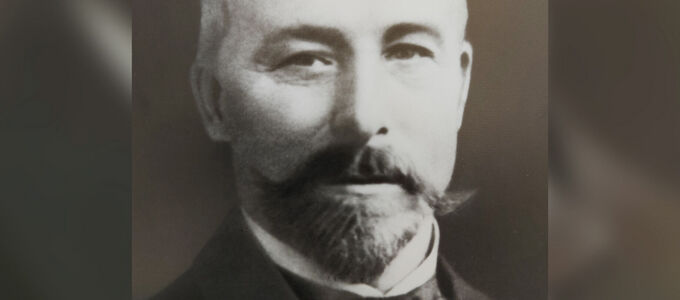
Eight believers in an attic room: this is how the now twenty congregations in the city of Berlin (Germany) started. And closely connected to it all is one name in particular: Ernst Traugott Hallmann, who died hundred years ago on 20 March 1922.
Ernst Traugott Hallmann was born on 21 December 1854 in Altschönau a. d. Katzbach in Silesia, modern Świerzawa (Poland). When he was 19, he heard about the New Apostolic faith through Apostle Johann August Ludwig Bösecke and had himself sealed by this Apostle a short time later already.
His parents were shocked by their son’s decision. They did not understand his belief, could not do anything with it. They wanted nothing to do with him any longer and refused to allow him into their house. His father even wanted to disinherit him. This falling out lasted fifteen years, until the parents too has grasped their son’s faith and joined the New Apostolic Church.
Literally the shirt off his back
Already four years after he was sealed, Ernst Traugott Hallmann served as a Priest and was transferred to Berlin. There, in a tiny attic in Berlin’s Fischerkiez neighbourhood, a settlement of single-story fisherman’s cottages, he conducted services for eight New Apostolic people. The members of his congregation described him as a “servant inspired by the love of Jesus”. Thanks to his work, the congregation in Berlin grew slowly but steadily. Before long, the congregation counted thirty members and the attic room became too small.
New premises were found, but the economic situation was making things difficult. Time and again, Rector Hallmann had to resort to special methods. He frequently brought his good frock coat to the pawnshop in order to be able to pay the church rent on time with the loaned money.
From Berlin to Königsberg
In 1893 Ernst Traugott Hallmann was ordained as a Bishop for Berlin and East Prussia. His then Apostle, the later Chief Apostle Friederich Krebs, sent him to Königsberg (modern Kaliningrad). The New Apostolic Christians in this region were widely scattered and needed special attention and care. Within the first three months, Bishop Hallmann had already managed to bring a small flock of brothers and sisters together, which gradually grew.
His mission in East Prussia demanded Hallmann’s full strength. Often, he had to trek through the snow and ice for hours, leaving him completely exhausted. Already the long train rides with a fourth-class ticket, meaning standing-room only, pushed him to his physical limits. Thanks to his tremendous exertion, the congregations grew steadily so that in 1897 a separate district of East Prussia could be founded.
On 19 September 1897 Chief Apostle Friedrich Krebs ordained Bishop Hallmann as an Apostle in Königsberg (modern Kaliningrad). In the years to come, the number of New Apostolic Christians in his Apostle district increased so that by the time he returned to Berlin in 1905, more than thirty congregations had been established. Reports from the magazine Der Herold describe the extraordinary achievements of the Apostle. For example, on Christmas 1901 alone the Apostle sealed 71 people in two divine services. According to the statistics for 1902, around 500 people were sealed in East Prussia.
And back to Berlin
Apostle Hallmann was called back to Berlin by Chief Apostle Krebs in January 1905. He handed over a well-managed district to the newly ordained Apostle Wilhelm Oehlmann. Even before Apostle Hallmann could take up his duties in his new, old district, Chief Apostle Krebs died. His successor, Chief Apostle Hermann Niehaus, honoured the decision of his predecessor and entrusted the fifty congregations of the district of Berlin to Apostle Hallmann. In the 17 years in which Apostle Hallmann served the New Apostolic Christians in Berlin, the district grew to 146 congregations with some 20,000 members.
In the years leading up to his death, he suffered severely from asthma and died at the age of 68. In the funeral service Chief Apostle Niehaus said: “Together with the deceased, I envisioned the beginnings of the work of God when it was still small and insignificant. We shared many years of joy and sorrow. Now the work has grown and together with God we can express our gratitude that He was able to work through him, inspiring both the will and the deed.”




